Air plants, scientifically known as Tillandsia, are some of the most fascinating and versatile plants you can add to your indoor space. Unlike most plants, they don’t require soil to grow, which makes them perfect for creative displays and low-maintenance plant lovers.
If you’ve recently fallen in love with air plants or are thinking about bringing one home, understanding how to care for them indoors is essential to keeping them healthy and vibrant. This guide will take you through everything you need to know — from watering and light requirements to ideal temperature and creative display ideas.
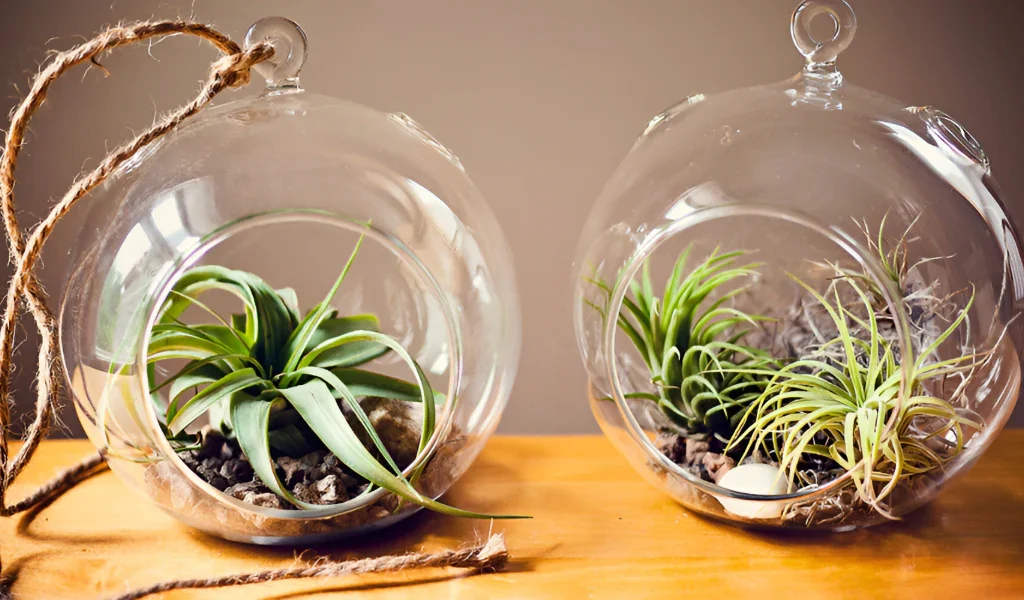
What Are Air Plants?
Air plants belong to the bromeliad family and naturally grow in the wild attached to trees, rocks, and other surfaces. They absorb moisture and nutrients through their leaves from the air and rain, rather than from soil. This unique ability means they require a different kind of care than traditional potted plants.
There are over 600 species of Tillandsia, ranging in size from tiny 1-inch plants to larger varieties over a foot tall, with a wide variety of leaf shapes and colors.
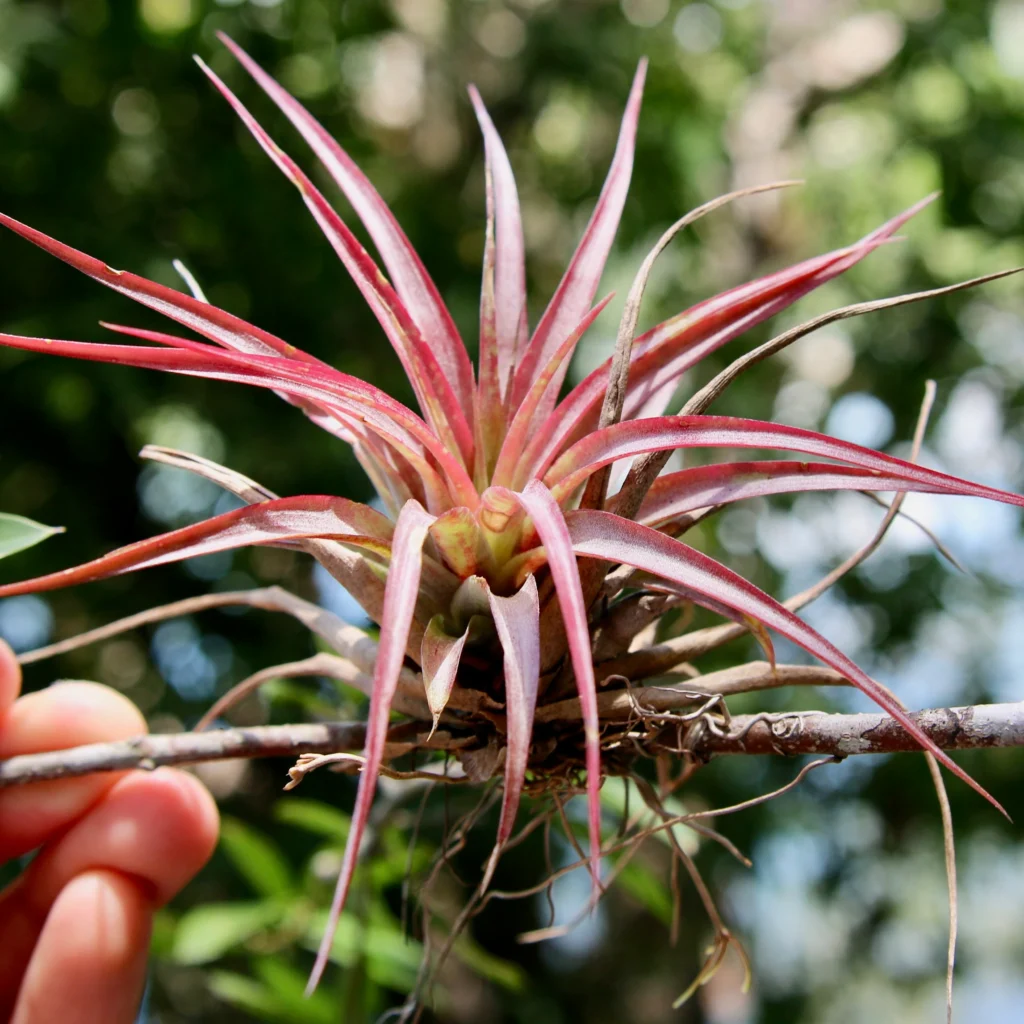
Why Choose Air Plants for Your Indoor Garden?
- Soil-free growth means less mess and more design freedom.
- They require minimal care compared to many houseplants.
- Perfect for small spaces, terrariums, wall mounts, or hanging displays.
- They add a unique, modern aesthetic with their sculptural shapes.
- Air plants are pet-friendly and safe for most households.
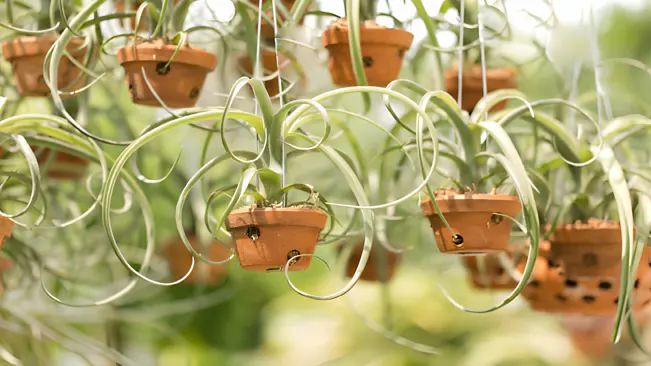
Essential Care Tips for Growing Air Plants Indoors
1. Light Requirements
Air plants thrive in bright, indirect light. Near an east, south, or west-facing window with filtered sunlight is ideal. Avoid harsh direct sunlight for prolonged periods, especially in summer, as it can scorch their leaves.
If natural light is limited in your home, you can use fluorescent or LED grow lights. Position the lights about 6-12 inches away and keep them on for 12 hours a day.
2. Watering Your Air Plant
Watering is the most crucial part of air plant care — get it right, and your plant will flourish.
How often to water:
Generally, water your air plant once a week. In dry or warm environments, twice a week may be necessary.
Watering methods:
- Soaking: Submerge your air plant in room temperature water for about 20-30 minutes. After soaking, shake off excess water gently to avoid rot.
- Misting: For a light hydration boost between soakings, mist your plant’s leaves 2-3 times a week.
Important: Always allow your air plant to dry completely within 4 hours after watering. Leaving water trapped in the leaves can cause rot.
3. Air Circulation
Good air circulation is essential for air plants since they absorb moisture from the air and need to dry properly after watering. Keep them in a spot with gentle airflow, such as near a fan or open window.
4. Temperature and Humidity
- Temperature: Air plants prefer temperatures between 50°F and 90°F (10°C to 32°C). They are not frost-tolerant, so avoid exposing them to temperatures below 45°F.
- Humidity: These plants enjoy moderate to high humidity, typical of many indoor environments. If your home is dry (especially during winter), increase humidity with regular misting or placing a humidifier nearby.
5. Fertilizing Air Plants
While air plants don’t need much fertilizer, feeding them monthly during their growing season can encourage healthier growth and blooming.
- Use a bromeliad or air plant-specific fertilizer diluted to 1/4 strength.
- Apply by adding fertilizer to the water when soaking.
- Avoid over-fertilizing as it can damage the plant.
6. How to Identify a Healthy Air Plant
- Leaves should be firm, vibrant, and free of spots or browning.
- The plant should feel plump and not shriveled or dry.
- New growth from the center indicates a happy, thriving plant.
- Some species produce colorful blooms or pups (baby plants), which is a sign of maturity.
7. Common Problems and How to Fix Them
Brown or crispy leaf tips: Usually a sign of underwatering or too much direct sun. Increase watering or move to a less intense light spot.
Soft or mushy leaves: Indicates overwatering or poor drying. Adjust watering frequency and improve air circulation.
No growth or flowering: Could mean insufficient light or nutrients. Move your plant to brighter light and try fertilizing monthly.
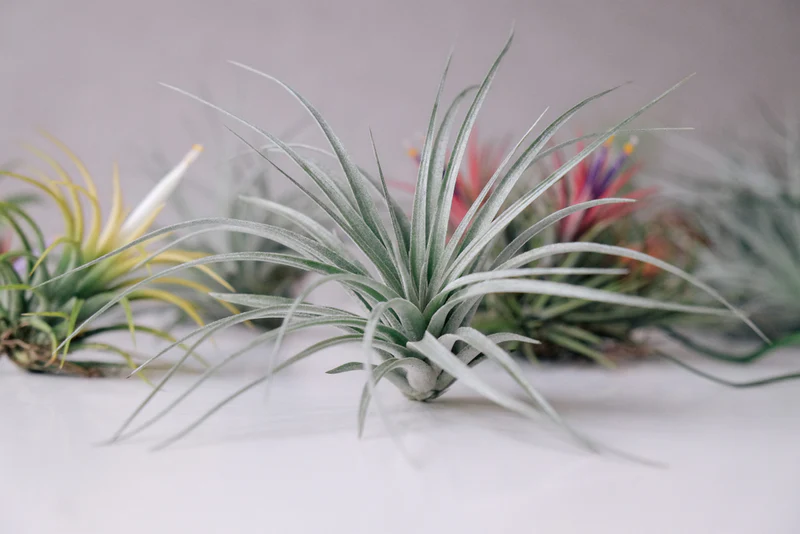
Creative Ways to Display Air Plants Indoors
One of the joys of air plants is how versatile they are in home decor.
- Terrariums: Glass containers with sand, pebbles, or driftwood create a mini-ecosystem.
- Mounted displays: Attach air plants to driftwood, cork bark, or shells using non-toxic glue or wire.
- Hanging orbs: Use clear glass globes hung from the ceiling or windows.
- Wall art: Mount them on wooden boards or inside picture frames for living art pieces.
- Table centerpieces: Place them in shallow bowls with decorative stones or moss.
How to Propagate Air Plants
Propagation happens naturally when air plants produce pups — small offsets growing at the base.
- Wait until pups are about one-third the size of the mother plant.
- Gently separate them by pulling or cutting with sterilized scissors.
- Plant the pup just like an adult air plant, ensuring proper watering and light.
Seasonal Care and Dormancy
While air plants don’t have a strict dormancy like some plants, they do benefit from seasonal adjustments.
- In winter, reduce watering slightly if indoor humidity is higher.
- Avoid placing near heating vents or cold drafts.
- During spring and summer, you may water more frequently due to warmer temperatures.
Air Plants and Pets: Are They Safe?
Air plants are non-toxic to cats, dogs, and other pets, making them a great option for pet-friendly households.
Troubleshooting: When to Replace Your Air Plant
While air plants are hardy, they don’t live forever.
- If your plant becomes completely brown, mushy, or disintegrates, it’s time to replace it.
- Dead plants won’t recover, but you can keep pups growing for new plants.
Final Thoughts: Why Air Plants Are Perfect Indoor Plants
Air plants combine minimal care with maximum style. Their unique growth habit and soil-free lifestyle open doors for creative displays in homes, offices, or classrooms.
By providing the right light, watering on schedule, good air circulation, and occasional feeding, your indoor air plants will reward you with beauty and intrigue for years to come.
If you want to start with easy care, air plants are among the best choices, especially if you’re short on space or time but still want a lush, green touch in your environment.


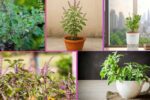


Leave A Comment